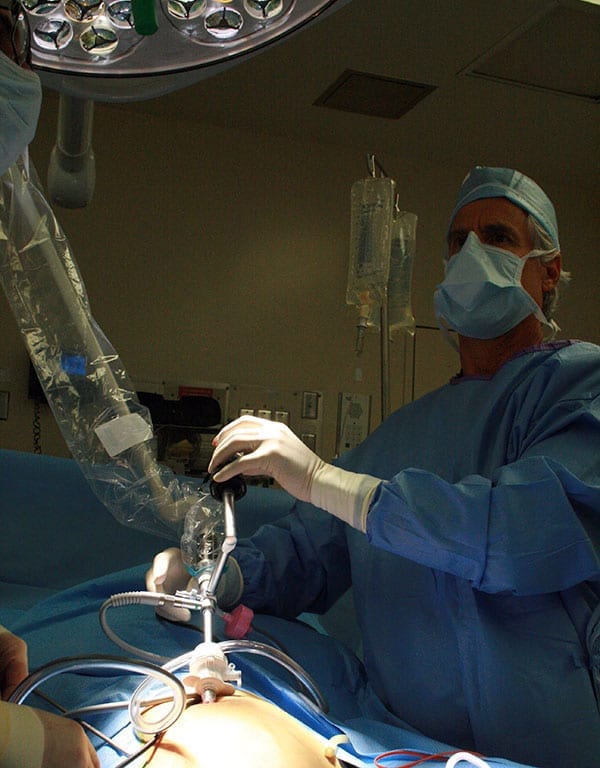To excise an area of tissue is to cut it out and then remove it from the body. Wide excision involves cutting out areas of abnormal tissue with a wide margin to ensure that only healthy tissue is left behind. If excision is not performed with wide margins around the area of visually abnormal tissue, some of the disease may inadvertently be left behind. This is because endometriosis can be very subtle in appearance and also because sometimes even if all areas of visually detectable disease are removed, some cells at the margins of these affected areas may retain the potential to become disease at a later date via a process of coelomic metaplasia. Excising with generous margins is therefore preferable. The wider the area of excision the more skill needed as more structures may be involved. Both the area and the depth of the excised tissue must be sufficient to ensure that all disease is removed.

Wide excision involves cutting out areas of abnormal tissue with a wide margin to ensure that only healthy tissue is left behind.
-Dr. Cook
What does wide surgical excision look like?
In the following video, Dr. Cook demonstrates the process of surgical excision of endometriosis. In this example, a teenage patient undergoes her first laparoscopic excision surgery of widespread superficial endometriosis.
The goal of complete removal of all areas of disease should remain the same regardless of the tool that the surgeon happens to use: Remove ALL areas of endometriosis from the body!
-Dr. Cook
How is Excision Surgery Performed?
Excision can be performed surgically in one of two ways: (1) Mechanical Excision, or (2) Thermal Excision. Mechanical excision uses only the mechanical shearing force of scissors, without the aid of electrical energy. This method of surgery is also referred to as cold cutting because no heat is involved. Thermal excision uses electrosurgery, CO2 laser or harmonic scalpel to apply a high-intensity heat source to the tissue in a linear fashion, producing linear vaporization. Often the term “vaporization” is confused with “burning” or “coagulation” but in actual fact, linear vaporization is just another term for thermal excision – using high-intensity thermal energy to vaporize the tissue in a linear plane.
The advantage of thermal excision over mechanical excision is that it is more time efficient. If only mechanical energy were used, the length of surgery would become untenable both to the surgeon (physical exhaustion and elevated risk of error) and to the patient (a longer duration of anesthesia carries higher risks of peri- and post-operative complications). Complex surgeries would likely need to be conducted in several steps, spread across two or more procedures, or the surgeon would need to convert to laparotomy (large incision) rather than laparoscopy (keyhole surgery) in order to complete the procedure in a timely manner. All in all, the introduction of thermal excision (linear vaporization) to laparoscopic surgery has revolutionized endometriosis surgery; it has enabled highly skilled surgeons to safely remove all of a patient’s endometriosis during one single minimally invasive procedure. In modern-day surgery, advanced endometriosis surgeons typically combine mechanical and thermal excision during the same surgery selecting the technique most suited to the given situation.
The specific techniques employed and opinions as to the best tool for the job vary between surgeons. The goal of complete removal of all areas of disease should remain the same regardless of the tool that the surgeon happens to use: Remove ALL areas of endometriosis from the body!
